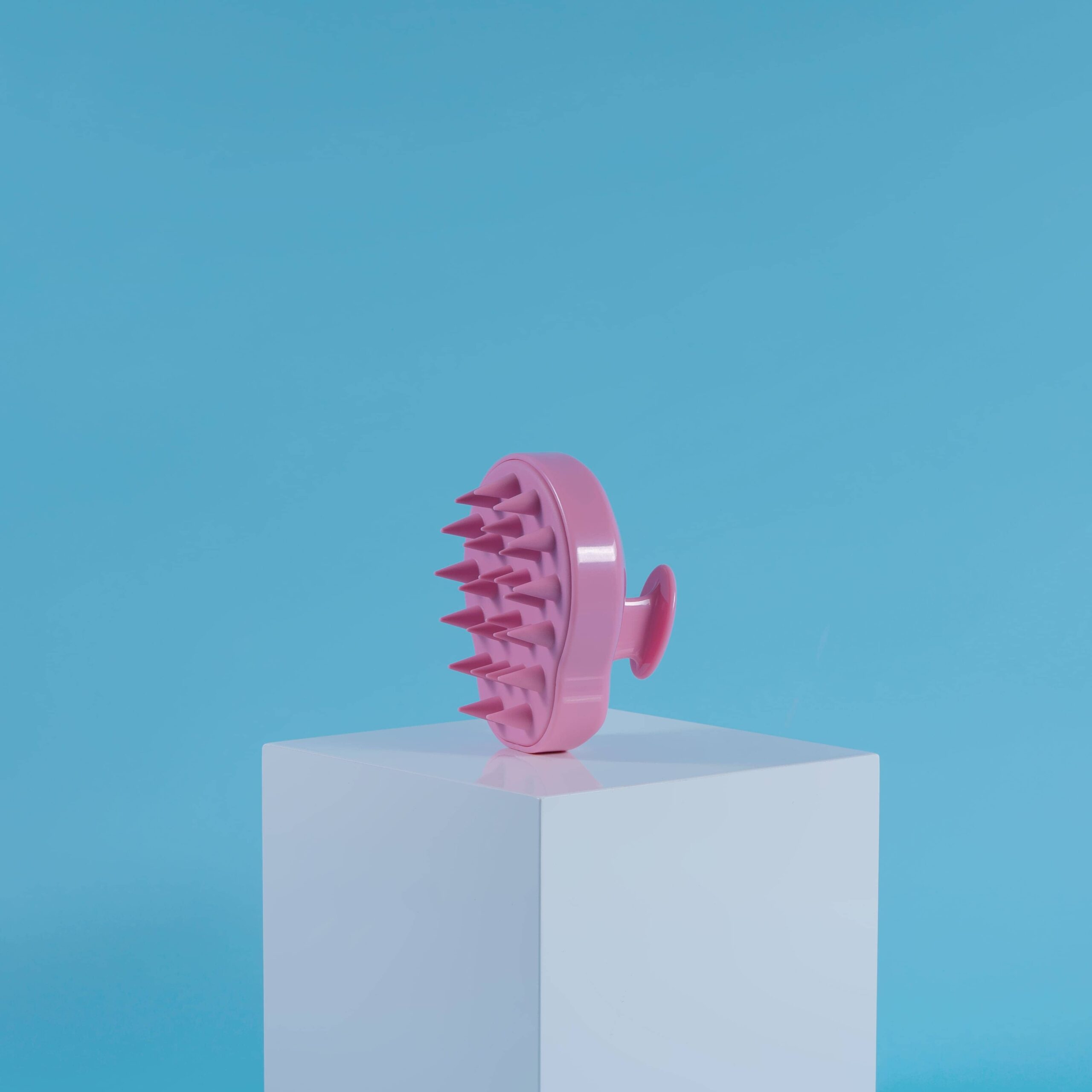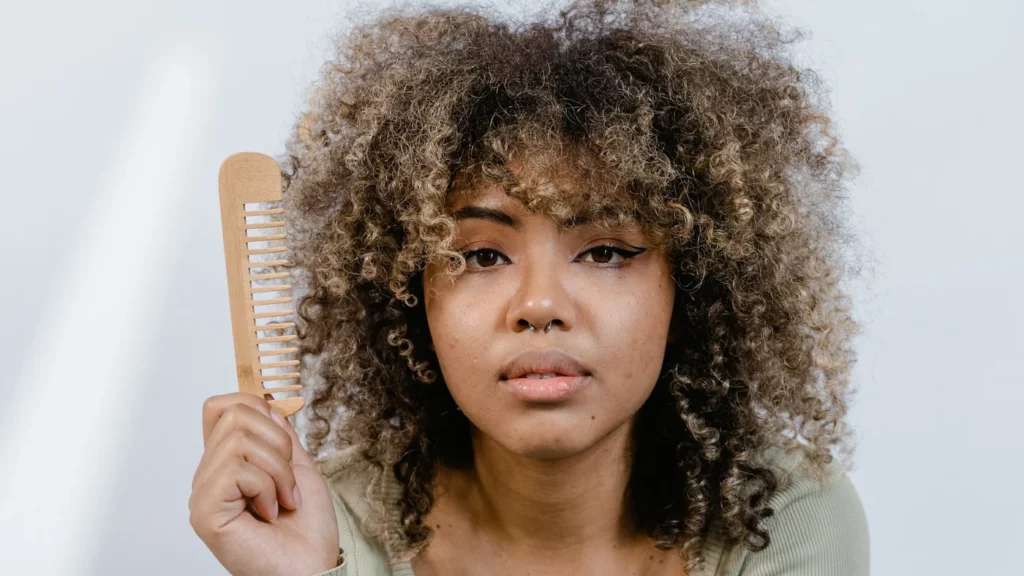You probably know how taxing it can be to grow natural hair and maintain it. Natural hair is highly prone to breakage and requires frequent moisture, hydration and TLC to remain healthy. Growing natural hair can take time to perfect, but with the right strategies, techniques and routines that target your specific hair type, you can get the head of hair you’ve always wanted.
This guide will walk you through everything you need to know about growing your natural hair successfully. From identifying your curl type to choosing the right oils for your individual needs, we’ve got all the tips and tricks on how you can achieve a longer, healthier mane quicker than expected.
Decide on a Haircare Routine
Achieving healthy natural hair is all about consistency and routine, so it’s important to identify a healthy hair care routine that fits your lifestyle and works with your natural hair type. Keep in mind that these routines will change, depending on your hair’s current state. If you’re experiencing hair loss, a routine that promotes hair growth may help, but for most people, a routine for healthy hair will be best, especially if it’s been a while since you’ve last seen your natural hair.
The best way to identify which routine is best for your hair type is to track your hair progress over a few months. Pay special attention to your hair’s current state, including its hydration, growth rate and breakage rate. Once you’ve identified what your hair needs, you can begin building a routine that promotes the best situation for your hair.
Define Your Curl Type
When it comes to growing natural hair, it’s important to identify your curl type. Your curl type can help determine what products are best for your hair and what routine will yield the best results. Knowing your curl type will also make it easier to find a hair stylist who can achieve the look you want. If you don’t know your curl type, don’t fret. There are a few ways you can figure it out. First, use the “curl pattern mapping” method.
This chart maps your curl pattern based on your hair’s length, thickness and texture. Another way to determine your curl type is by feeling your hair after washing it. If your hair is kinky, it will feel spiky. If your hair is wavy, it will feel soft and touchable. If your hair is coily, it will be springy and tightly wound. Your curl type will also indicate what products are best for your hair type, which makes it easier to find the right products to use.

Eat Right to Grow Natural Hair
Your hair health starts with your diet. What you eat and drink can have a major impact on the health of your hair, and it can even be a sign that you need to make a few changes to your eating habits. First, it’s important to understand what vitamins and nutrients your hair needs. Your hair’s main source of strength and growth is keratin, which is found in protein. Protein is necessary for your hair’s structure, but it also plays a major role in managing your hair’s oil production.
If your diet is low in protein, your hair can become dehydrated and brittle, which can lead to breakage. Most fruits, vegetables and legumes contain protein, which makes them great additions to your diet. Dairy products, meats and fish are also good sources of protein, but they also contain high levels of cholesterol and saturated fats, which can hurt your hair’s health. You may want to limit your intake of these foods, especially if you have thin hair that is easily weighed down by too much oil.
Use The Right Products
No matter what your curl type is, certain products are best for growing healthy hair. Heavy conditioners are best for thin, limp hair, while light conditioners are best for thicker, coarser hair. Moisturizing conditioners are best for normal hair, but heavier conditioners can help add moisture if your hair is extremely dry. It’s also important to use the right amount of product.
If you use too much product, it can weigh down your hair, making it look thin and stringy. Too little product will leave your hair dry and brittle, making it more susceptible to breakage. But even with the right products and routine, it’s also important to know how to apply them properly. Start by shampooing your hair with warm water and moisturizing shampoo. Next, apply the conditioner to your roots and work your way down. This technique will help distribute the product evenly through your hair so you don’t miss any strands.

Don’t Forget to Stretch
Even with the best hair care routine and diet, sometimes breakage can still occur. One of the best ways to protect your hair against breakage is by adding stretching to your routine. You can stretch your hair in a few different ways. First, massage your scalp. This helps increase blood flow to your scalp, which can also help increase hair growth. Next, you can stretch your hair while it’s wet.
This can help prevent breakage if you have thick, coarse hair that gets weighed down easily by oil. You can also try to pat your hair dry with a towel instead of rubbing it dry. Rubbing your hair dry can cause friction that can cause breakage. If you have thin, limp hair, stretching may not be as necessary, but if you have thick, coarse hair, stretching can be extremely beneficial.
Massage your Scalp
When talking about protecting your scalp from breakage, it’s important to note that your scalp and hair are two very different organs. While your hair is what makes up the look of your mane, your scalp houses your hair follicles and sebaceous glands. Your sebaceous glands secrete oil, which is what keeps your scalp hydrated and prevents it from becoming brittle.
When you massage your scalp, you increase blood flow to the area and the sebaceous glands, which helps promote healthy hair growth as well as protect against breakage. It’s best to massage your scalp while your hair is wet with warm water, as this can help open up your pores and allow the water to reach your scalp. Once your hair is dry, use your hands to apply pressure in a downward, massaging motion. Start at the top of your head and work your way down. You can also try using a scalp brush to help reach your roots.

Protect your hair at night
Now that you know how to promote hair growth and prevent breakage, it’s important to note that you can’t do anything about your hair while you’re sleeping. Sleeping with damp hair can cause breakage, so it’s important to protect your hair as you sleep. If your hair is thin and straight, it’s best to sleep with a silk or satin bonnet to prevent breakage.
If you have thick, coarse hair, you can try sleeping with a silk or satin scarf, but you can also try putting a silk pillowcase on your pillow to absorb extra oil and protect your hair from breakage. If you don’t want to sacrifice your comfort for hair protection, you can also try wearing a soft, fabric sleep cap.
How Long Does It Take to Grow Natural Hair?
During the growth phase, your hair can increase up to half an inch every month, or up to 42 inches over a 7-year period. Your hair goes through an anagen phase, which lasts two to seven years and is characterized by rapid hair growth.
How Can I Speed Up Hair Growth?
Whether you want to rock a specific hairstyle or are in the process of switching to natural hair, it’s not uncommon to wish you could make your hair grow faster. Despite the fact that there are some ways to speed up the growth of your strands, it’s crucial to recognise that it is not an overnight process. Most people have probably heard about how to grow hair faster in a week, but that is simply not feasible.
A nutritious diet and regular exercise are both critical to stimulating hair growth. Circulation is improved by exercising, enabling a better hair growth cycle. Scrubbing your scalp with gentle pads of your fingertips can also help.
Conclusion
Growing your natural hair can be trying, but with the right hair care routine, it can also be rewarding. No two people have the same hair, so it’s important to identify your curl type as well as your hair’s current state so you can find the right products and routine that work best for you. It’s also important to keep in mind that your hair’s health changes as you age, so it’s good to reevaluate your routine every few years. No matter what hair type you have, you can achieve longer, healthier hair with the right hair care routine.





